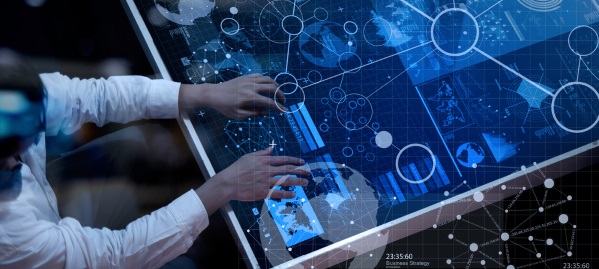Search posts by keywords:
Filter posts by author:
Related NEAT Reports
Other blog posts
posted on Jul 13, 2018 by Mike Smart

NelsonHall recently attended Atos’ Technology Day in Paris, where we heard updates on its digital technology initiatives, including key partnerships with Siemens and Google, and new AI product developments.
Extending partnership with Siemens
Atos gave an update on its ongoing investment with Siemens, a seven-year-old partnership that was recently extended to 2020 with the addition of an extra €100m in funding (pushing the total amount of funding to €330m). The partnership focuses on data analytics and AI, IoT and connectivity services using the MindSphere platform, cybersecurity, and digital services.
Also, we were encouraged by what appeared to be a renewed interest in integrating the platform by Siemens, with Siemens now partnering with Infosys to develop applications and services for MindSphere. Developing the MindSphere platform and growing the business beyond Siemens will be a critical factor for growth in Atos’ IoT business.
Google partnership update
Atos presented on its partnership with Google, announced in April 2018, framing the partnership around AI. Within the partnership scope, Atos’ initiatives are to:
- Develop its Canopy Orchestrated Hybrid Cloud to integrate Google Cloud platform (which will become Atos’ preferred cloud computing choice)
- Create a ML practice using Google Cloud’s ML APIs, and develop vertical-specific algorithms
- Use G Suite as part of its Digital Workplace offerings.
The first Atos/Google co-lab has now been opened, with two more set to follow: in Boulogne, Paris (opening in fall 2018) and Dallas, TX. Each of these labs have 50 specialists, 25 from Atos, 25 from Google.
AI product developments
Atos announced the release of its Codex AI product suite. The suite aims to act as a workbench for client development on AI and the management of AI applications. The advantage of Atos’ suite is its ability to push and manage the AI algorithms across a number of architectures in an infrastructure-agnostic manner, which we found particularly interesting with regard to edge computing.
Edge computing has a multitude of applications for IoT services. Even now the amount of data sent by IoT devices can strain the ability to communicate data back for analytic model development, and in some cases data just cannot be communicated in a timely manner. Edge computing aims to reduce the amount of data that needs to be sent ‘home’ by providing some computing power for running algorithms at the device end. Linking back to the Codex AI suite, a key selling point of the edge computing box will be the ability to have models developed at HPC stacks, then use algorithms developed on the suite to be run at the edge.
Other future-looking announcements included the release of an updated version of Atos’ Quantum Learning Machine (QLM) and a prototype of hardware for an edge computing box.
Comparing these announcements to 2016’s ‘2019’ ambition plan, it's clear to see Atos has the potential to overperform on Codex expectations. The Codex business, which encompasses business-driven analytics, IoT services, and solutions including MindSphere and now the Codex AI suite, had a revenue target of €1bn by 2019, up from ~€500m in 2016. Codex experienced very significant growth in 2017, delivering revenues of ~€760m, in part due to its acquisition of zData in the U.S. We expect to see further acquisitions in the Codex business, as projects from MindSphere and the releases announced at this event ramp up.
In sum, the strengthening of key partnerships, AI product developments, and the slow build of the Quantum business, establish a foundation for the long-term growth of Atos’ digital and data-orientated business.
